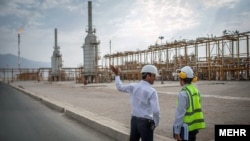Iran increased nominal power generation capacity by 3% to around 78.9 GW during last fiscal year, ended on March 20, the statistics of Energy Ministry’s annual report indicate.
The mentioned figure is nominal power generation, but the actual capacity stood at below 68.5 GW, which demonstrate that the country’s power plants suffer seriously from aging and exhaustion.
During the last year Iran fulfilled only a half of the power generation growth plan, especially its renewable power projects are far behalf of plan. Iran needs at least 5 percent growth annually to avoid power outage in summers, when the electricity demand soars.
The country added only 100MW to renewables last year, while it had planned to install 690 MW. Currently the renewables account for less than 0.5 percent of Iran’s total power generation capacity.
Iran has planned to increase renewables by 5GW during 2016-2021, but currently the volume stands at 364MW in total and most of that was installed before 2016.
About 80% of Iran’s installed power plants are thermal, with 37.9 percent efficiency in average. The efficiency rate is very low, comparing with global standards. For instance, the rate in its neighbor Turkey is above 50 percent. Iran has planned to convert a half of thermal power plants to the combined-cycle power plant (CCPP) with above 45 percent efficiency, but after several years, the share of CCPPs in the total power generation capacity remains unchanged at around 25 percent.
Gas-to-power increased
Iran's increased gas deliveries to power plants by 12.4 percent to 69.454 billion cubic meters, which led to 18% decline in liquid fuels demand in this sector during last year. Its thermal power plants consumed 8.73 billion liters of diesel (gas oil) and mazut (fuel oil).
Iran suffers heavenly from air pollution with fossil fuels-related 615 million tons CO2 emission annually. The country has planned to replace gas with liquid fuels during last years and even stated that it would stop diesel and mazut burning in this sector during last year. Though it couldn’t curb liquid fuels burning entirely due to delays in gas production projects, but its gas delivery to power sector has increased year on year during last five years.
Iran’s power trade
During the last fiscal year, Iran generated 312 TWh electricity energy. It increased electricity energy exports by 17.7% to 7.871 TWh and declined imports by 7.3% to 3.919 TWh. Iran’s major electricity clients are Iraq and Pakistan. It imports power mostly from Turkmenistan and Armenia as well.






